Women’s History Month: Women of ABoVE
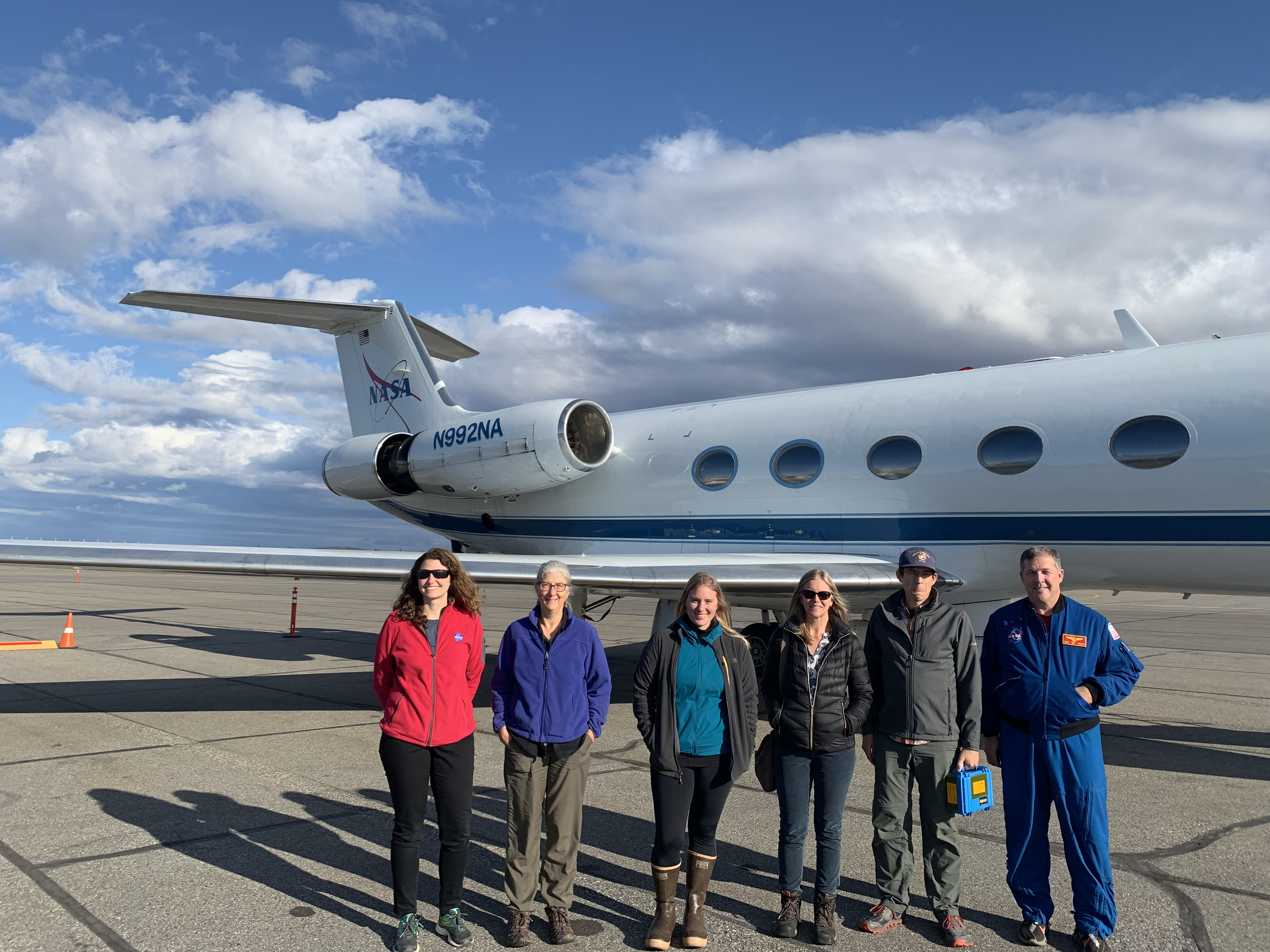
Members of the ABoVE science team tour the NASA aircraft used to make L-band SAR measurements in support of the ABoVE Airborne Campaign. From left: Dr. Liz Hoy (ABoVE science coordinator), Alison York (Alaska Fire Science Consortium Coordinator), Dr. Amanda Barker (non-ABoVE permafrost researcher), Dr. Laura Bourgeau-Chavez (ABoVE principal investigator), David Austerberry (radar operator), and Trent Kingery (pilot).
Credit E. Hoy
Women's History Month
In honor of Women's History Month, this story focuses on the unique journeys of three ABoVE women scientists, in their own words.
The Arctic-Boreal Vulnerability Experiment (ABoVE)
Climate change in the Arctic and Boreal region is unfolding faster than anywhere else on Earth, resulting in reduced Arctic sea ice; thawing of permafrost soils; decomposition of long-frozen organic matter; widespread changes to lakes, rivers, and coastlines; and alterations of ecosystem structure and function. NASA's Terrestrial Ecology Program is conducting a major field campaign, the Arctic-Boreal Vulnerability Experiment (ABoVE), in Alaska and western Canada, for 8 to 10 years, starting in 2015. ABoVE seeks a better understanding of the vulnerability and resilience of ecosystems and society to this changing environment.
The ABoVE Science Cloud
The NASA Center for Climate Simulation (NCCS) has partnered with the NASA Carbon Cycle and Ecosystems Office (CCE Office) to create a high-performance science cloud for this field campaign. The ABoVE Science Cloud combines high-performance computing with emerging technologies and data management with tools for analyzing and processing geographic information to create an environment specifically designed for large-scale modeling, analysis of remote sensing data, copious disk storage for “big data” with integrated data management, and integration of core variables from in-situ networks. The ABoVE Science Cloud is a collaboration that promises to accelerate the pace of new Arctic science for researchers participating in the field campaign. Furthermore, by using the ABoVE Science Cloud as a shared and centralized resource, researchers reduce costs for their proposed work, making proposed research more competitive. The ABoVE Science Cloud is available to all ABoVE projects.
Dr. Elizabeth Hoy
Hometown: Annapolis, MD
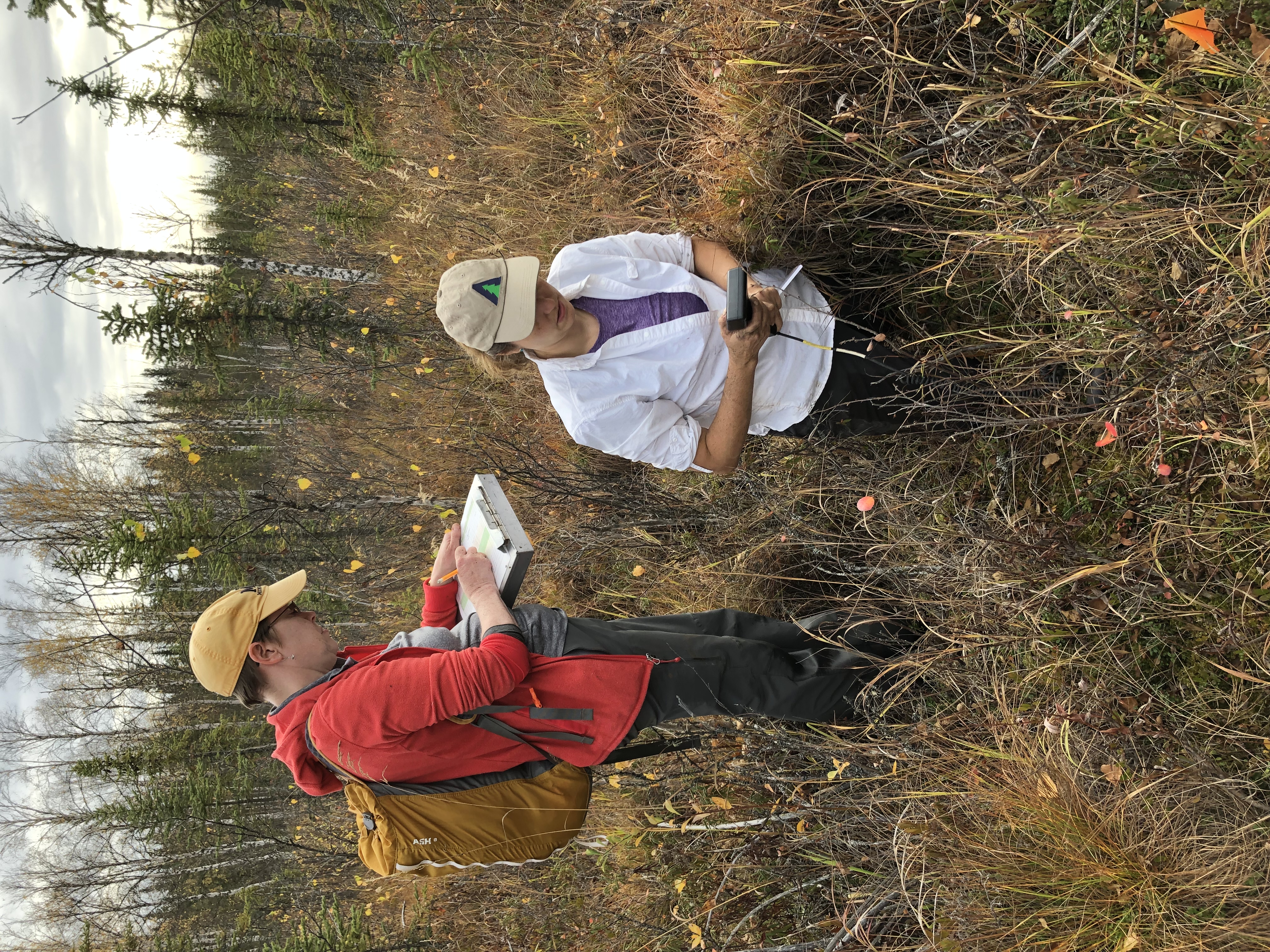
Elizabeth Hoy (at right) and fellow ABoVE scientist Nancy French make soil moisture measurements in support of the ABoVE Airborne Campaign. Photo credit: E. Hoy
NASA Role: I work at NASA Goddard as a Senior Support Scientist. I study North America’s Arctic and boreal regions, looking at how fires affect carbon storage in a warming climate. I fly on NASA airplanes during the summer with NASA’s ABoVE field campaign. I help plan where the airplanes should fly in Alaska and Canada to make measurements about the region such as changes to permafrost, fire disturbance, soil moisture, and vegetation structure.
I support many aspects of the ABoVE Campaign, including coordination and planning, and have learned quite a bit along the way. I interact with principal investigators, design and produce data-driven maps, develop public web services, coordinate the use of high-performance computing and data management systems, archive data products for our researchers, and help to plan the airborne campaign.
Inspiration: I have always been interested in science and the environment, and my family encouraged my interest from an early age. As a kid, I would organize park cleanups with anyone around that I could find. That desire to care for the world around me has continued into adulthood, and it also inspired me to work in some of the remote regions of the world.
Were there any women in history/your field that inspired you? My mother, aunt, and grandmother all care deeply about the natural world. It is these women who encouraged me to nurture my innate passion for the environment, science, and learning. They inspired me to be bold, to aim for my Doctoral degree, and to make a positive impact on our society and world.
Career Path: During the last leg of my PhD, I started working at NASA Goddard. The ABoVE campaign was just getting started, and with my focus on fire ecology in boreal regions, NASA was a good fit.
Challenges: I ended up defending my dissertation proposal while pregnant with my son, and my daughter was just under a year old when I turned in my completed dissertation. Doing my graduate work while having a family was a challenge, but embracing my ability to be a scientist, and to be able to teach my kids about the world around us has been really important to me. Even now, I work to balance work and kids, but I have a supportive family network, which helps.
Conducting Research Using ABoVE Data and NCCS Resources: When first designing the ABoVE campaign, we knew we needed a collaborative computing space for what would become a large-scale field campaign. We now have over 700 collaborators who are part of the campaign and petabytes of data, either collected in support of the campaign or needed by scientists for their work. We worked with NCCS to develop the ABoVE Science Cloud, the first iteration of ADAPT.
We have over 100 people signed up to use ADAPT to create data products in support of the campaign. Using the computing power possible through the NCCS ADAPT and Discover supercomputer, researchers have been able to create data products spanning the entirety of the ABoVE research domain (Alaska and western Canada). Researchers can now leverage large datasets like Landsat and MODIS to develop advances in important campaign focus areas such as burned area products, changes in inland water over time, and changes in vegetation phenology over time. These products help us understand the complex environment and climate change interactions occurring in Arctic and boreal regions — regions that are warming three times faster than elsewhere on the Earth.
Impact: Overall, the campaign has used both ADAPT and Discover to process their datasets. To date, these resources have resulted in 8 journal articles and 12 published datasets, with many additional products still under development.
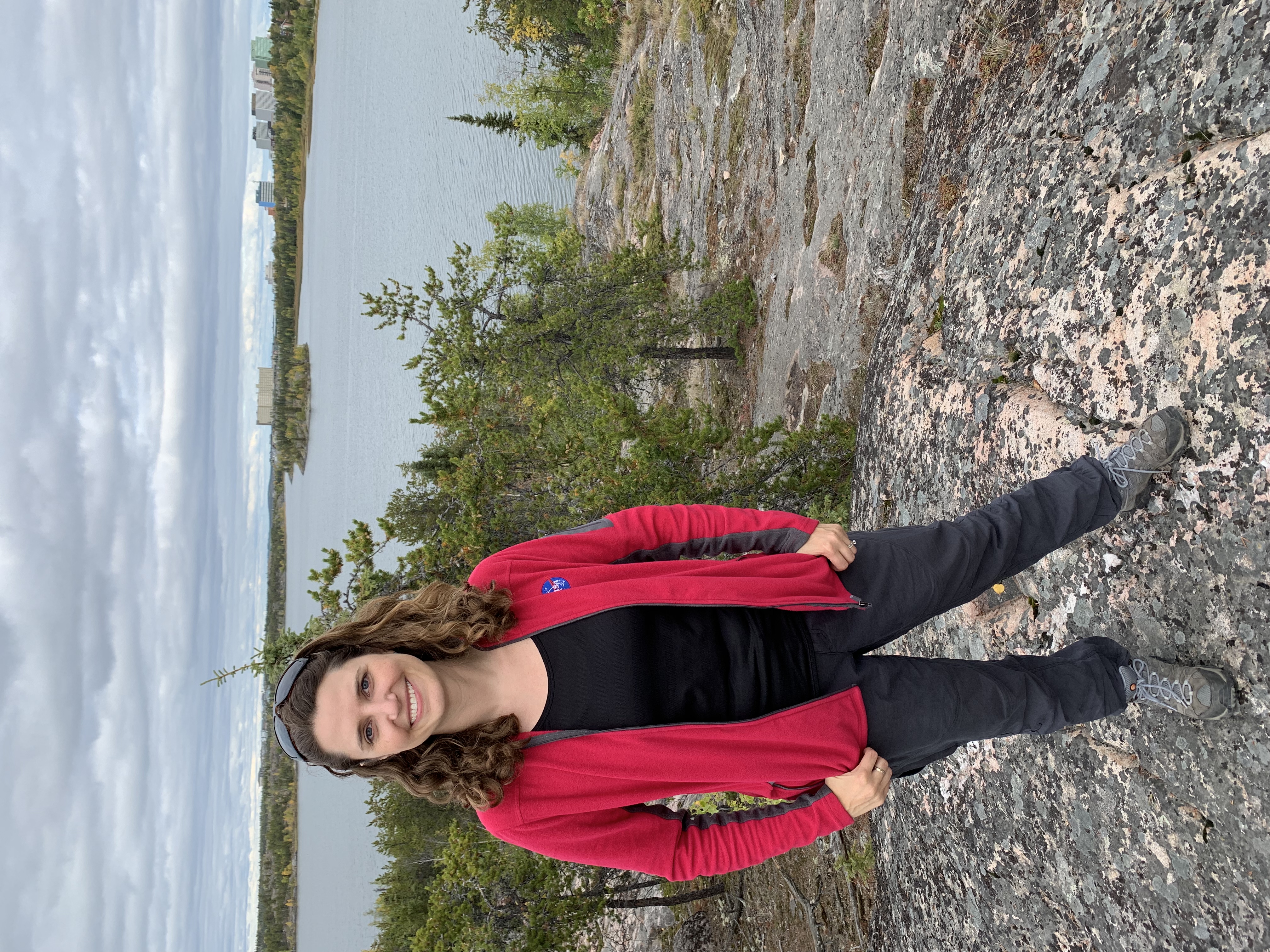
Dr. Leah Birch
Hometown: Mobile, Alabama
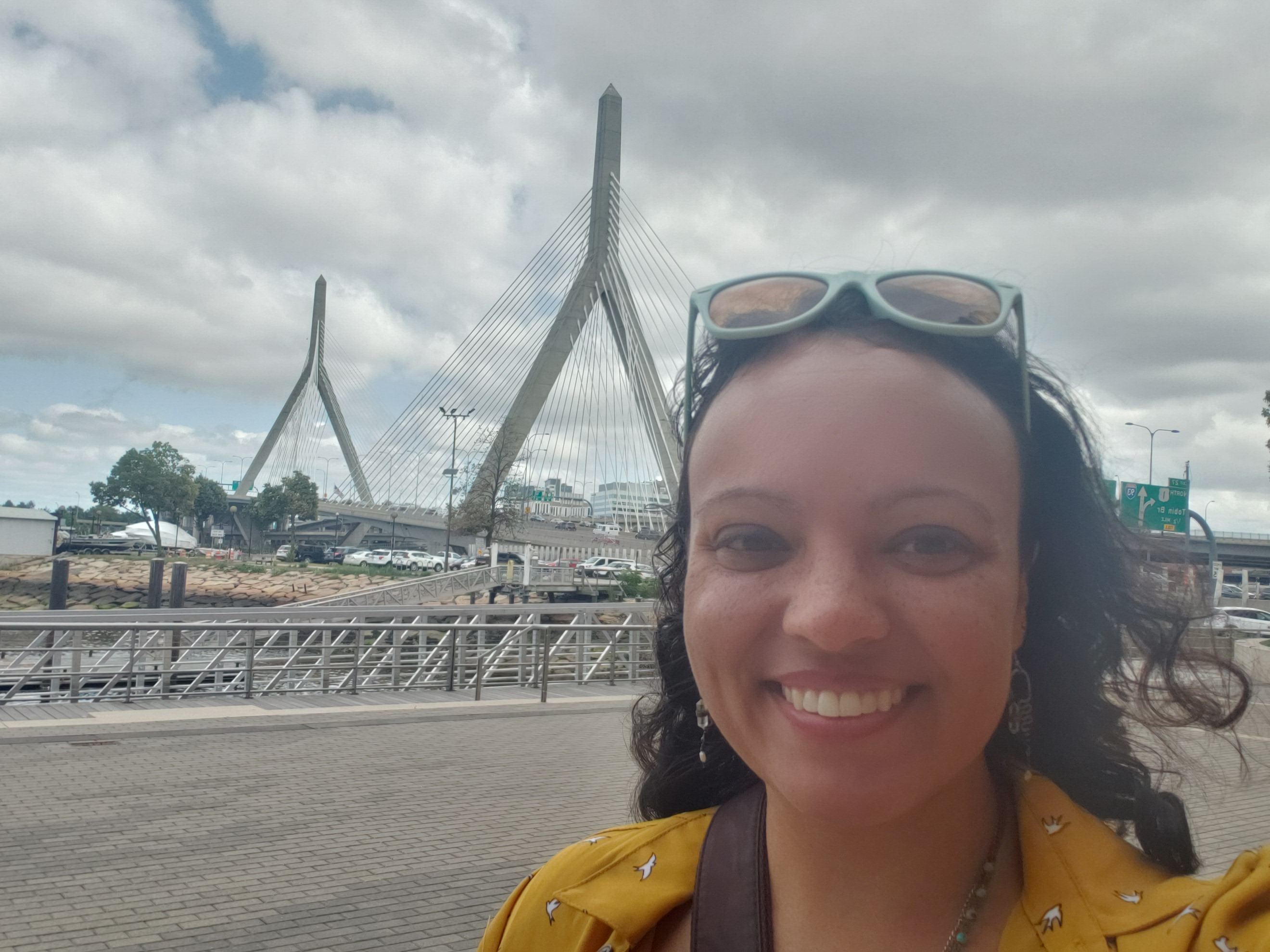
Position: I am a Postdoctoral Fellow at the Woods Hole Research Center, a scientific research organization that studies climate change impacts and solutions.
Role in ABoVE: I’m a scientist who uses mathematics and computers to understand the world around me. I am working on understanding the change in seasonal carbon dioxide fluxes that has been measured in the atmosphere, using a modeling framework. I am incorporating NASA products gathered as part of ABoVE into land model simulations.
Inspiration to Become a Researcher: I’ve been lucky to have some amazing research advisors from undergraduate to graduate school who helped me keep moving forward. I would not have applied to graduate school without enthusiastic encouragement from my professors at Loyola University New Orleans. Then, my advisors at Harvard showed me the importance and fun to be had in climate research, and I was hooked.
I always thought Ada Lovelace [the English mathematician and first author of an algorithm for a machine] was fascinating, especially because programming became so much of my work. However, my inspiration for perseverance is my grandmother, Celeste Birch (who would be tickled pink if she got her name in a NASA article).
Career Path: I started undergraduate school not knowing much except that I enjoyed the challenge of mathematics. Then, one of my undergraduate professors recommended that I should work with her on a project, and that’s where my interest in research started. I completed a few projects including statistical quality control and abstract algebra before finally finding my niche in climate dynamics in graduate school. I love being able to break down the processes we see around us into their base equations and ultimately understanding the interconnectedness of our climate.
Challenges/Inspiring Words: I think the most important thing anyone can have when deciding they want to pursue a science career is perseverance. We all feel like an impostor sometimes, but a little bit of stubbornness goes a long way.
Conducting Research Using ABoVE Data and NCCS Resources: I use the NCCS Advanced Data Analytics Platform (ADAPT) to post-process many of my climate model simulations. The goal of our project is to understand how the carbon cycle is changing in the Arctic Boreal zone, using observational data to inform model simulations.
Impact: ADAPT has been invaluable for easily comparing other researchers’ data to my own, in addition to easily running the post-processing scripts to understand trends in my simulation data.
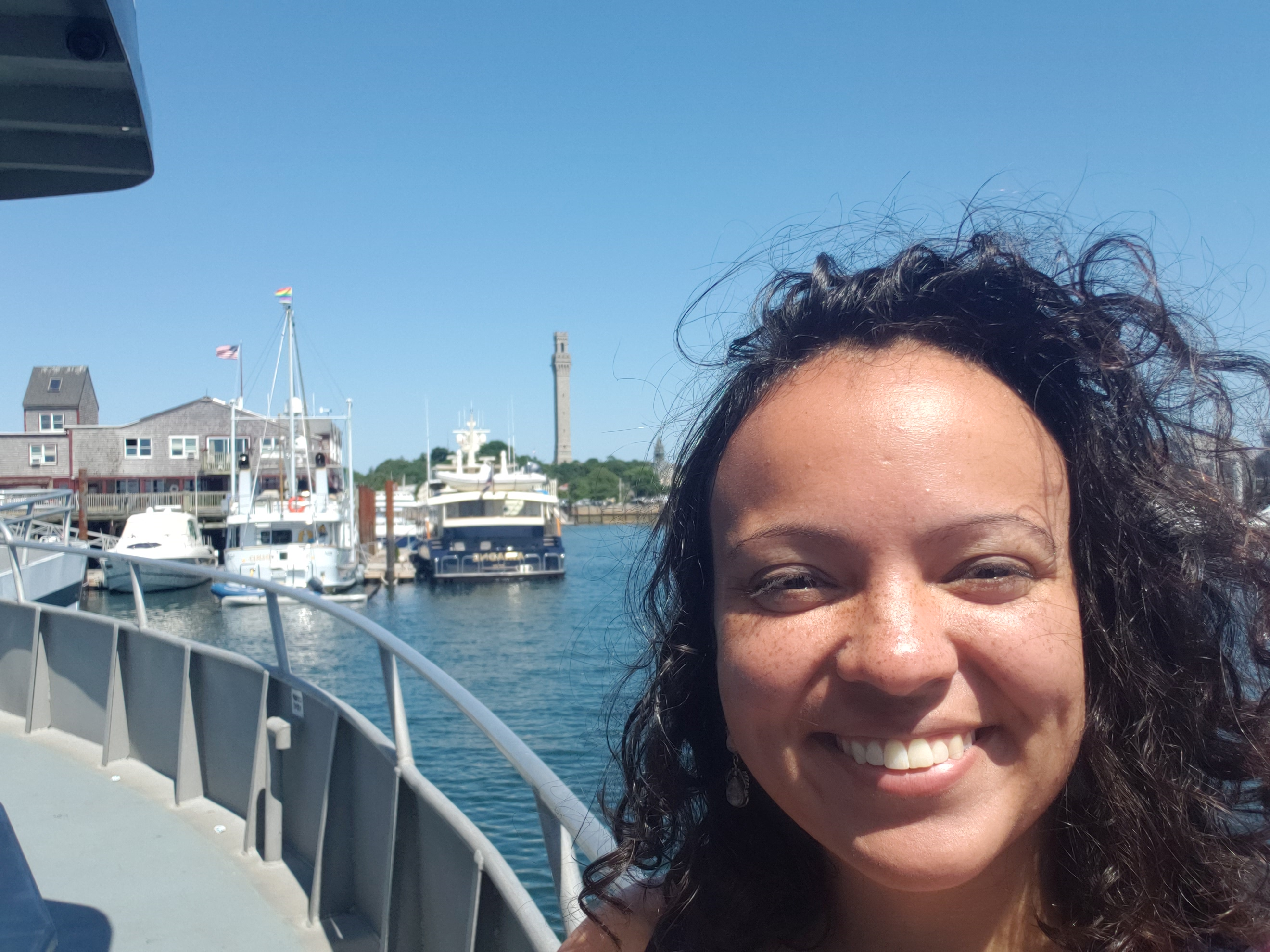
Dr. Tatiana Loboda
Hometown: Bowie, MD
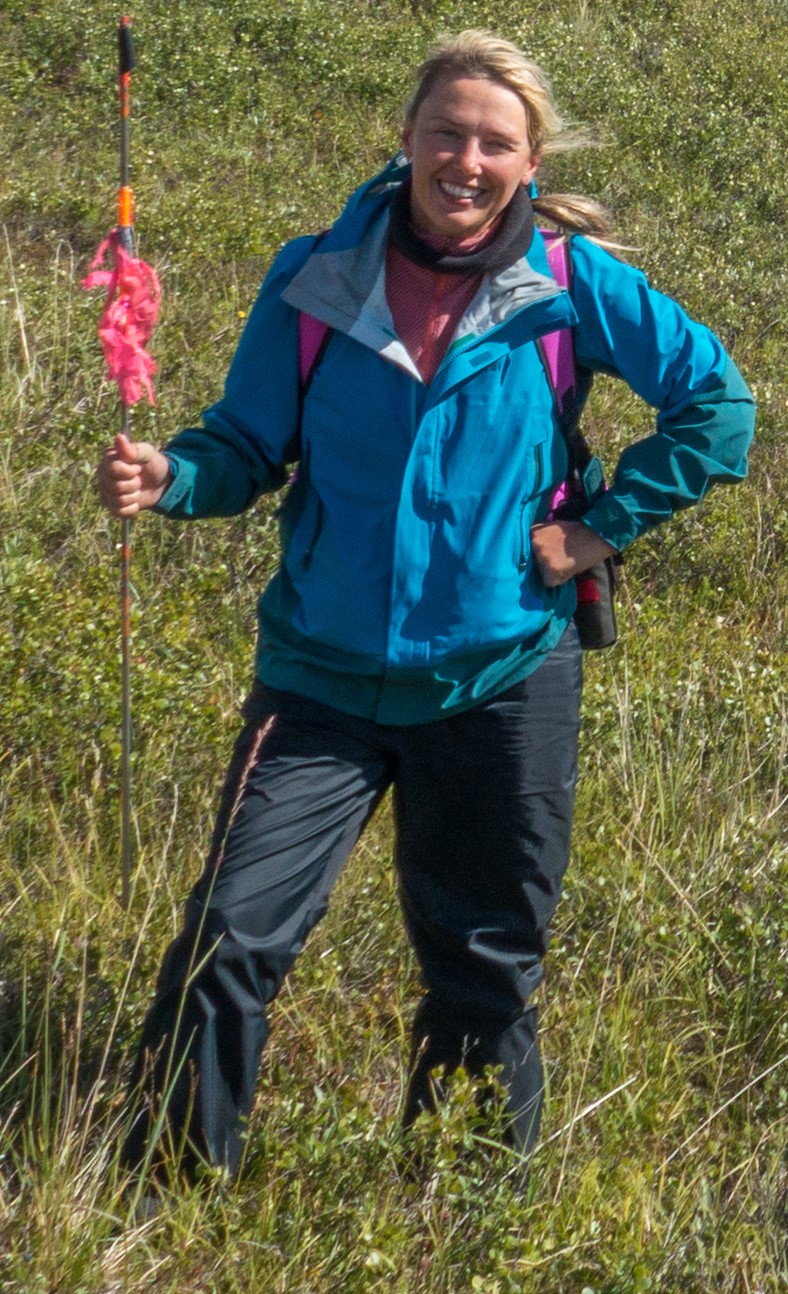
Position: I am a Professor and Associate Chair of the Department of Geographical Sciences at the University of Maryland, College Park, MD (UMD). I am a geographer — the kind that develops computer algorithms to extract meaningful information from satellite images and then uses it to predict different events: for example, fires or malaria outbreaks.
Role in ABoVE: I am Principal Investigator on an ABoVE project. This is my third ABoVE project: I was Principal Investigator on a pre-ABoVE project, an ABoVE Phase 1 project, and now an ABoVE Phase 2 project.
Inspiration to Become a Researcher/Career Path: I’m not sure it was a conscious choice at first. During my year-long internship with the National Park Service in 1999, I came across GIS—that was love at first sight, and I really wanted to learn more. Once I discovered satellite remote sensing, I just couldn’t stop myself from learning/doing more with it. That led to a PhD, then a Research Professor position, then a Tenure Track Assistant Professor position, to where I am now. What keeps me going in research is being the first person, ever, to find out something that nobody knows about yet. That is such a thrill!
Were there any women in history/your field that inspired you? I was incredibly fortunate to walk into a group of tremendously strong and supportive women who worked in satellite wildfire research and fire ecology when I started out on my research path. Susan Conard (of the US Forest Service, now the Editor in Chief of the International Journal of Wildland Fire), Amber Soja (NASA Langley), and Nancy French and Laura Bourgeau-Chavez (both at Michigan Technological Research University) really welcomed me into the community, from day one.
Challenges: It is incredibly challenging to have a real family life while doing the work we do without the unwavering support of our spouses. I attribute a large fraction of my success to my husband’s willingness to support my scientific curiosity and drive. He was the one to stay home with children while I traveled all over the country and the world to science meetings and collecting field data.
Inspiring Words: It is absolutely possible to have a great career and family life when you have the rock-solid support I do. I would like to echo Sheryl Sandberg’s sentiment and advise all women to “lean into” the work they are passionate about. Over time, I have learned that nothing limits you in your options more than you do yourself.
Conducting Research Using ABoVE Data and NCCS Resources: Right now, my ABoVE project examines the impact of wildfire smoke in Alaska on the health of Alaskans. Fires are a routine occurrence in Alaska, so in this project, we examine how this repeated (year after year) exposure to smoke impacts the hospitalization rate of Alaskans for different respiratory and cardio-vascular problems. In our work, we strongly rely on NCCS resources to develop detailed characterizations of fire occurrence, from which we derive emission estimates and subsequently concentration of fine particulate matter (PM2.5), which is the focus of our study.
Impact: My experience with NCCS — specifically ADAPT — mostly relates to my previous projects. I was one of the two very early adopters of the ADAPT system. I practically helped to test it out before it became an ABoVE designated system. The best example of its use that I have is the development of my circumpolar Arctic Boreal Burned Area (ABBA) product. I had everything quite under control until MODIS — my source for satellite imagery — was switched to a new processing stream (collection 6), right in the middle of my project. There was no way I could have re-downloaded circumpolar daily MODIS holdings and reprocess the dataset to incorporate MODIS collection 6 data (since anything based on collection 5 data was now obsolete) without using ADAPT. The NCCS’ direct link to the DAAC MODIS data removed any need for downloading. In addition, running multi-core processing allowed me to speed up product generation nearly 20 times. This truly was magical.
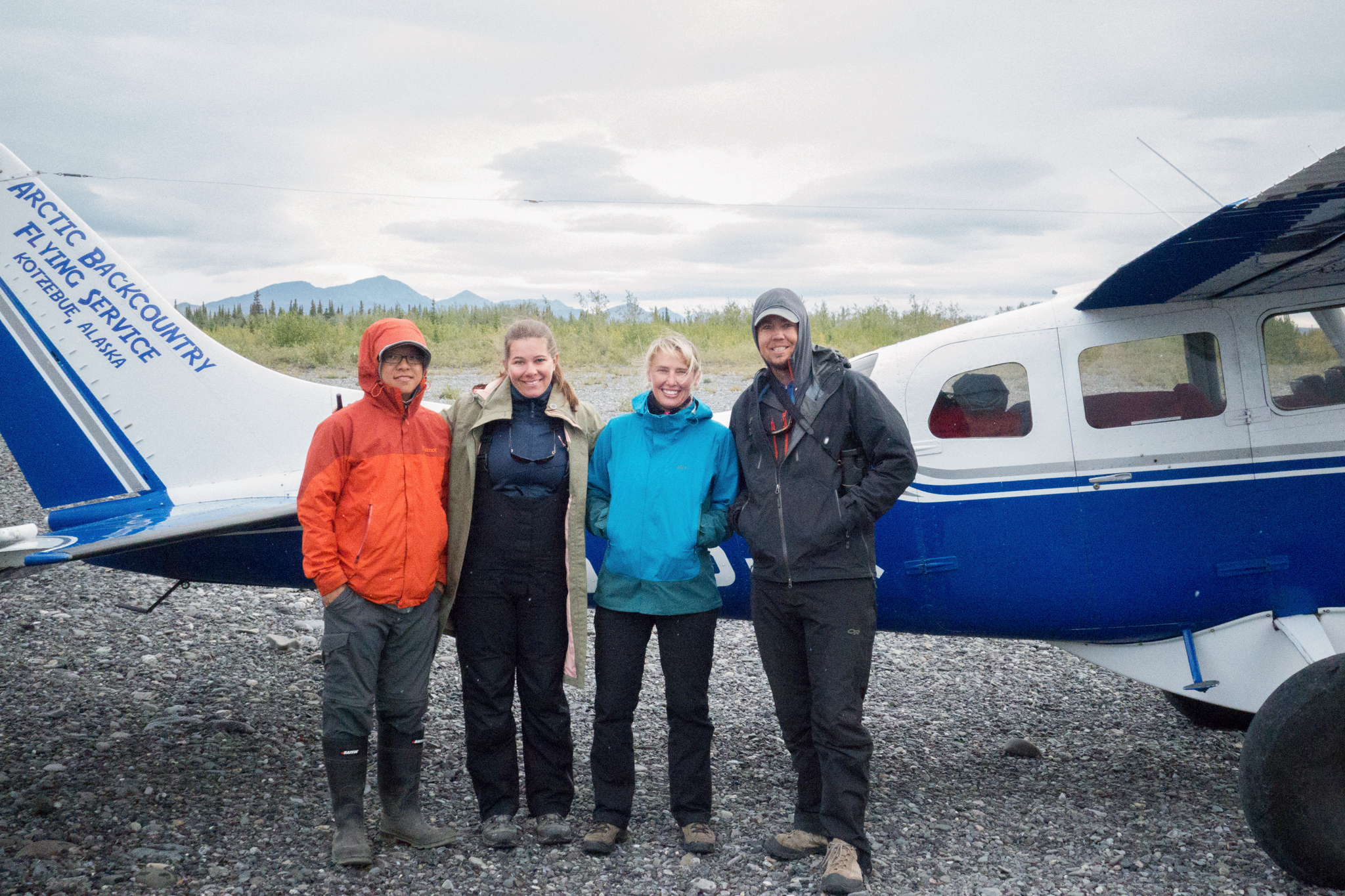
The team collecting field measurements to characterize the impact of single and repeated burning on tundra ecosystems during the August 2016 field campaign in the Alaskan tundra. Left to right: Dong Chen (UMD), Liza Jenkins (Michigan Tech University), Tatiana Loboda (UMD), and Garrett Jones (Arctic River Guides, LLC). Photo credit: Dong Chen, UMD.
Related Links
Sean Keefe, NASA Goddard Space Flight Center


